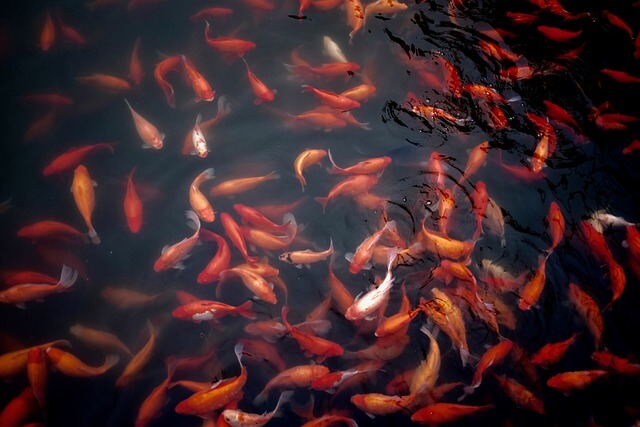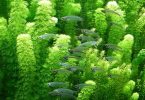Table of Contents
If you’re considering adding goldfish to your pond, you may be wondering if they can survive without a pump. The short answer is yes, goldfish can survive in a pond without a pump, but there are several factors to consider.
Firstly, goldfish are able to survive in stagnant water as long as there is enough oxygen. They obtain oxygen from the surface of the water and from plants, so having enough plants in your pond is crucial.
However, if your pond is completely still and has no plants, it may not be able to support the goldfish, especially if the water temperature rises.
Secondly, the size of your pond is also a factor. If your pond is small and overcrowded with goldfish, it will quickly become polluted with waste and toxins, which can harm the fish. In this case, a pump or filter is necessary to maintain water quality.
On the other hand, if your pond is large and has a balanced ecosystem, with enough plants and natural filtration, a pump may not be necessary.
Can Goldfish Survive in a Pond Without a Pump?
Goldfish are a popular choice for pond owners because of their vibrant colors and playful personalities. However, many pond owners wonder if their goldfish can survive without a pump. In this section, we will explore the factors affecting goldfish survival in a pond without a pump.
The Importance of Oxygen
Oxygen is essential for the survival of goldfish. Without adequate oxygen levels, goldfish can suffocate and die.
In a pond without a pump, oxygen levels can drop quickly, especially during hot summer months or when there are many fish in the pond.
Goldfish obtain oxygen through their gills, which extract dissolved oxygen from the water. In a pond without a pump, the water can become stagnant, reducing the amount of dissolved oxygen available for the fish.
Factors Affecting Goldfish Survival
Several factors can affect goldfish survival in a pond without a pump. These include:
- Water temperature: Goldfish are cold-water fish and prefer water temperatures between 65-75°F. In warmer water, the amount of dissolved oxygen decreases, making it harder for goldfish to breathe.
- Number of fish: The more fish in a pond, the more oxygen they consume, and the faster oxygen levels can drop. Overcrowding can quickly deplete oxygen levels, making it difficult for goldfish to survive.
- Pond size: The size of the pond can also affect oxygen levels. Smaller ponds can become stagnant more quickly, reducing the amount of dissolved oxygen available for goldfish.
Alternative Methods to Oxygenate Pond Water
While a pump is the most effective way to oxygenate pond water, there are alternative methods that can help increase oxygen levels:
- Aerator: An aerator is a device that pumps air into the water, increasing oxygen levels. There are several types of aerators available, including surface aerators, diffused aerators, and fountain aerators.
- Plants: Aquatic plants can help oxygenate pond water by releasing oxygen during photosynthesis. Plants also absorb carbon dioxide, which can help maintain pH levels in the pond.
- Water changes: Regular water changes can help maintain oxygen levels in a pond. By replacing stagnant water with fresh water, you can increase the amount of dissolved oxygen available for goldfish.
In conclusion, while goldfish can survive in a pond without a pump, it is not recommended. Without adequate oxygen levels, goldfish can suffocate and die.
If you do choose to keep goldfish in a pond without a pump, it is important to monitor oxygen levels regularly and take steps to increase oxygen levels as needed.
The Pros and Cons of Using a Pond Pump
Advantages of Using a Pond Pump
If you’re considering keeping goldfish in a pond, you may be wondering whether or not you need a pond pump. While it is possible to keep goldfish in a pond without a pump, there are several advantages to using one.
Firstly, a pond pump helps to keep the water clean and clear. It circulates the water, which helps to oxygenate it and remove any debris or waste that may have accumulated. This can reduce the risk of algae growth and keep the water healthy for your goldfish.
Secondly, a pond pump can help to regulate the temperature of the water. In hot weather, the water in a pond can become too warm, which can be harmful to goldfish. A pump can help to cool the water by circulating it and creating movement on the surface.
Thirdly, a pond pump can add a decorative element to your pond. There are many different types of pumps available, from simple fountains to more elaborate water features. Adding a pump can enhance the visual appeal of your pond and create a relaxing atmosphere.
Disadvantages of Using a Pond Pump
While there are many advantages to using a pond pump, there are also some potential disadvantages to consider.
Firstly, a pond pump can be expensive to purchase and install. Depending on the size of your pond and the type of pump you choose, you may need to spend several hundred dollars or more.
Secondly, a pond pump can require regular maintenance. You will need to clean the filter and replace any worn or damaged parts to ensure that the pump continues to function properly. This can be time-consuming and may require some technical knowledge.
Finally, a pond pump can be noisy. Depending on the type of pump you choose, it may produce a humming or buzzing sound that can be annoying or distracting. This can be especially problematic if your pond is located near your home or other living spaces.
Overall, whether or not you choose to use a pond pump will depend on your personal preferences and the specific needs of your goldfish and pond.
While a pump can offer many benefits, it is not always necessary, and you may be able to keep your goldfish healthy and happy without one.
Maintaining a Healthy Pond Environment
To ensure that your goldfish can survive in a pond without a pump, it is essential to maintain a healthy pond environment. Here are some tips to help you keep your pond in top condition.
Regular Water Testing
Regular water testing is critical to maintaining a healthy pond environment. You should test the water at least once a week to monitor the levels of ammonia, nitrite, and nitrate.
If the levels of any of these chemicals are too high, it can be harmful to your goldfish. You can use test kits to check the water quality in your pond.
Cleaning and Maintenance
Cleaning and maintenance are essential to keeping your pond healthy. You should remove any dead leaves, debris, or algae that accumulates in the pond regularly.
You can use a net or a pond vacuum to remove debris from the bottom of the pond. You should also check the pump and filter regularly to ensure that they are working correctly.
Feeding and Caring for Goldfish
Feeding and caring for goldfish is crucial to their survival in a pond without a pump. You should feed your goldfish a high-quality fish food that is specifically formulated for goldfish.
You should also provide your goldfish with a variety of foods, such as vegetables and live foods, to ensure that they get all the nutrients they need.
In addition to feeding your goldfish, you should also monitor their health regularly. Look for signs of illness, such as lethargy, loss of appetite, or abnormal swimming behavior. If you notice any of these signs, you should take action immediately to prevent the spread of disease.
By following these tips, you can maintain a healthy pond environment for your goldfish to thrive in. Remember to test the water regularly, clean and maintain the pond, and feed and care for your goldfish properly.







